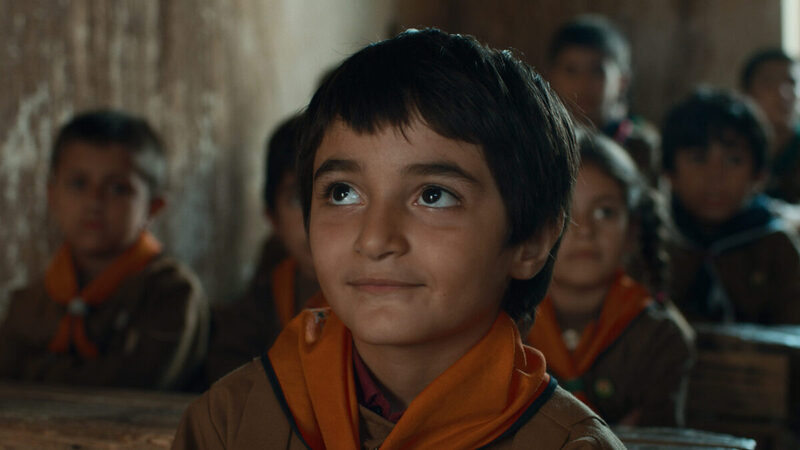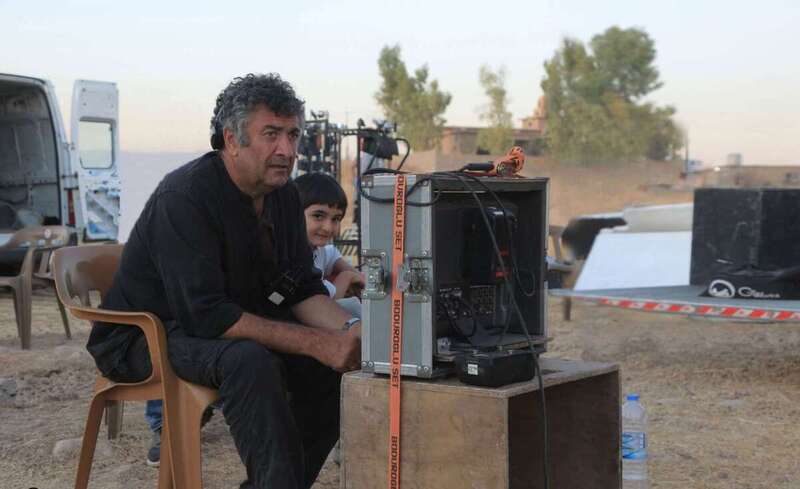My grandfather's land was near the border. One day my grandfather took my hand and we went to his land together. He planted various plants in the field. There was a "train" railway near the border. I looked over, and the train passed in front of us with its high sound. I asked my grandfather what that line was.
He said, “Son, the part to the north is called above the line and we are below the line. We have some relatives over there".
- Why are we divided into two parts?
“My son, we are not divided into two parts, but into four. In 1923, I saw they came to our village and what they did to us".
My grandfather did not want to continue this story. His tears hurt my heart and there was nothing I could do.
The film, directed by Kurdish director Mano Khalil, tells the story of the suffering in the western part of Kurdistan. The suffering of the Kurds who have been oppressed by the Ba'ath regime for years. The pain of subjugation, language, borders, nation, and territory are all reflected in the content of this film. In the 1970s, under the name of the “Arab Belt” system and the Arabization of the region, about 2,000 to 3,000 Arab families were brought to Kurdish areas and forcibly settled in Kurdish houses. The film takes place in Qamishlo, the western part of Kurdistan, but is directed in Erbil, the southern part of Kurdistan.

Summary of the movie:
The film tells the story of a six-year-old Kurdish boy who lives in a village near the border between North and West parts of Kurdistan in the city of Qamishlo and his family is divided between two states, Turkey and Syria. This film tells the story of fifty years of oppression by the Ba'ath regime. The film highlights many special points full of pain and unpleasant memories for every Kurd. These include; the child who was beaten for speaking Kurdish, spoke Arabic at school and Kurdish at home. The border that divided land, homes, culture, feelings, and humanity, and citizens were killed daily by Turkish soldiers without any crime or reason. They also tried to change the demographics of the region under the name of the “Arab Belt” by bringing in Arabs who were considered to be forced to replace the Kurds. On the other hand, the story of Syrian Jews who were forced to leave their homes and migrate. The other is about an Arab teacher who comes from the capital (Damascus) and forces the slogans "The Arab nation is one", "Syria of Assad", and many others into the minds of students.

When the film viewer takes a closer look at the film, many interesting symbols and motives emerge. When my friends and I were watching this movie, I looked at my finger which had been broken by the beating of our Arabic teacher. My only mistake was that I mispronounced the Arabic national anthem and didn’t know how to say it. Even now, as far as I remember, it was not a school, but a prison. But when they taught us, they said that there is no democratic and humane country like Syria! What hurt me the most was that some of these people were Kurds. They forced dozens of chauvinist anthems into our minds. Today I want to throw those anthems out of my mind, but unfortunately, I can't.
Mano Khalil, director of Jiran
The film has participated in dozens of international festivals; Kurdish director Mano Khalil has won dozens of awards for this film.









